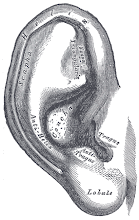Octave Bands Turn 50!
I'm always curious about the origin of things, especially in acoustics. Sometimes, I research things until I find the "zero point." Sometimes, I just happen across things...
Fifty years ago this month, in the October 1957 issue of the Journal of the Acoustical Society of America (JASA, Vol. 29, No. 10), a letter from Robert W. Young, an noted acoustician* working for the US Navy, was published. The letter was entitled "Preferred Frequencies for Acoustics." In it, Young made his case for standardizing the set of frequencies used for acoustical analyses. Illustrating his signature prescience, he wrote:
"Before our data-taking equipment becomes so automatic that we are irretrievably committed to a certain series of test frequencies, however inconvenient, we should look ahead by selecting standard test frequencies that will continue to be useful over a wide range of acoustical endeavor
Young concluded the letter with:
"...it is here suggested for general use in acoustics, where discrete test frequencies in a geometric series are required, that they be...100, 125, 160, 200, 250, 315, 400, 500, 630, 800, 1000 cps, etc., and that when octave intervals are adequate the frequencies printed in boldface type be chosen."
This letter, combined with Young's dedicated involvement in what would ultimately become the American National Standards Institute (ANSI), set the standard for acoustical analyzers and other equipment utilizing the now ubiquitous one-third-octave and octave bands.
If it weren't for Young's dedication to this, we'd be discussing reverberation time in the 125 Hz band and, in the same report, discussing background noise in the 106 Hz band (or the 140 Hz band if you're a consultant in Europe). Whether you believe the standard bands are a good thing or a bad thing, we can thank Robert Young for the fact that they are standard.
*The late Robert Young was honored with a special paper session at the 148th Meeting of the ASA in November 2004, which I was fortunate enough to have attended. Over the course of his life-long career in acoustics, Robert Young made many significant contributions to acoustical standards, our understanding of sonic booms, and community noise. The ASA offers an award in his name for Undergraduate Student Research in Acoustics.


0 Comments:
Post a Comment
Subscribe to Post Comments [Atom]
<< Home